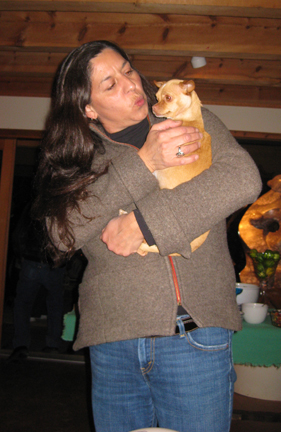Cayuga people
Cayuga people are a Native American group, one of the six nations of the Iroquois Confederacy located in the northeastern United States and southeastern Canada. Historically, the Cayuga were settled in what is now New York state, living among the fertile lands around the Finger Lakes. As with the other members of the Iroquois Confederacy, the Cayuga nation played a significant role in the social, political, and economic structures of the Iroquois people.
History[edit | edit source]
The Cayuga people's history is deeply intertwined with the formation and operation of the Iroquois Confederacy, a powerful alliance that included the Mohawk, Oneida, Onondaga, Seneca, and later the Tuscarora alongside the Cayuga. This confederacy, also known as the Haudenosaunee, was established by the legendary figures Deganawida and Hiawatha. It was designed to bring peace among the member nations and provide a collective defense against external threats.
During the American Revolutionary War, the Cayuga were significantly impacted due to their alliance with the British. This allegiance led to devastating attacks on their villages by American forces, forcing many Cayuga to flee to Canada, where they were granted land by the British Crown to compensate for their losses. Today, Cayuga people live in both the United States and Canada, with communities in New York, Oklahoma, and Ontario.
Culture[edit | edit source]
The Cayuga culture, like that of the other Iroquois nations, is matrilineal, meaning that clan membership and inheritance are passed down through the mother's line. The Cayuga participate in the Longhouse religion, a spiritual practice that encompasses the traditional beliefs and social governance of the Iroquois. The Longhouse serves as both a physical and spiritual home for the people, hosting ceremonies and meetings.
Corn, beans, and squash, known as the "Three Sisters," are staples of Cayuga agriculture, reflecting the importance of farming in their society. The Cayuga, along with the other Iroquois nations, are also known for their skilled craftsmanship, particularly in basketry and beadwork.
Government[edit | edit source]
The Cayuga Nation's government operates under the Great Law of Peace, the founding constitution of the Iroquois Confederacy. This system of governance includes a council of chiefs, each representing one of the member nations. Decisions are made collectively, with an emphasis on consensus rather than majority rule. Today, the Cayuga Nation continues to maintain its traditional council, while also engaging with external political systems to advocate for the rights and welfare of its people.
Contemporary Issues[edit | edit source]
The Cayuga people, like many Native American communities, face ongoing challenges related to land rights, cultural preservation, and legal recognition. Land claims and disputes over territory have been a significant issue, with the Cayuga seeking to reclaim ancestral lands through legal processes. Efforts to preserve the Cayuga language and culture are also vital to the community, ensuring that traditional practices and knowledge are passed down to future generations.
Conclusion[edit | edit source]
The Cayuga people have a rich history and cultural heritage as part of the Iroquois Confederacy. Despite the challenges of the past and present, the Cayuga continue to contribute to the cultural and political landscape of North America, upholding the traditions and governance structures of their ancestors while navigating the complexities of the modern world.
Search WikiMD
Ad.Tired of being Overweight? Try W8MD's NYC physician weight loss.
Semaglutide (Ozempic / Wegovy and Tirzepatide (Mounjaro / Zepbound) available. Call 718 946 5500.
Advertise on WikiMD
|
WikiMD's Wellness Encyclopedia |
| Let Food Be Thy Medicine Medicine Thy Food - Hippocrates |
Translate this page: - East Asian
中文,
日本,
한국어,
South Asian
हिन्दी,
தமிழ்,
తెలుగు,
Urdu,
ಕನ್ನಡ,
Southeast Asian
Indonesian,
Vietnamese,
Thai,
မြန်မာဘာသာ,
বাংলা
European
español,
Deutsch,
français,
Greek,
português do Brasil,
polski,
română,
русский,
Nederlands,
norsk,
svenska,
suomi,
Italian
Middle Eastern & African
عربى,
Turkish,
Persian,
Hebrew,
Afrikaans,
isiZulu,
Kiswahili,
Other
Bulgarian,
Hungarian,
Czech,
Swedish,
മലയാളം,
मराठी,
ਪੰਜਾਬੀ,
ગુજરાતી,
Portuguese,
Ukrainian
Medical Disclaimer: WikiMD is not a substitute for professional medical advice. The information on WikiMD is provided as an information resource only, may be incorrect, outdated or misleading, and is not to be used or relied on for any diagnostic or treatment purposes. Please consult your health care provider before making any healthcare decisions or for guidance about a specific medical condition. WikiMD expressly disclaims responsibility, and shall have no liability, for any damages, loss, injury, or liability whatsoever suffered as a result of your reliance on the information contained in this site. By visiting this site you agree to the foregoing terms and conditions, which may from time to time be changed or supplemented by WikiMD. If you do not agree to the foregoing terms and conditions, you should not enter or use this site. See full disclaimer.
Credits:Most images are courtesy of Wikimedia commons, and templates, categories Wikipedia, licensed under CC BY SA or similar.
Contributors: Prab R. Tumpati, MD

